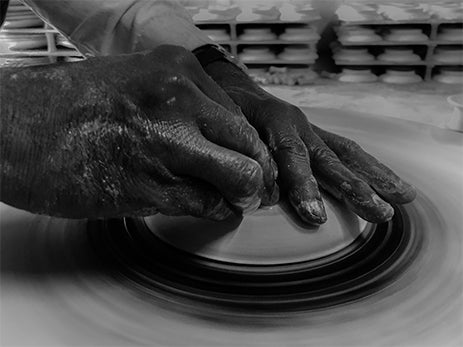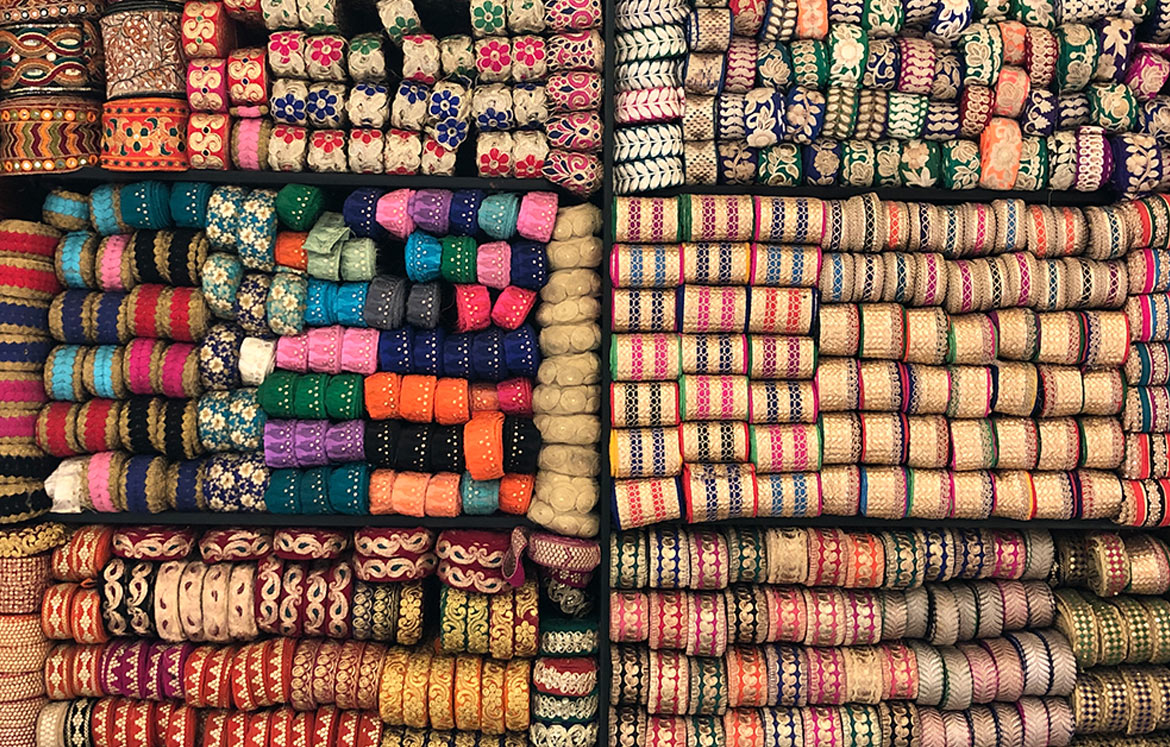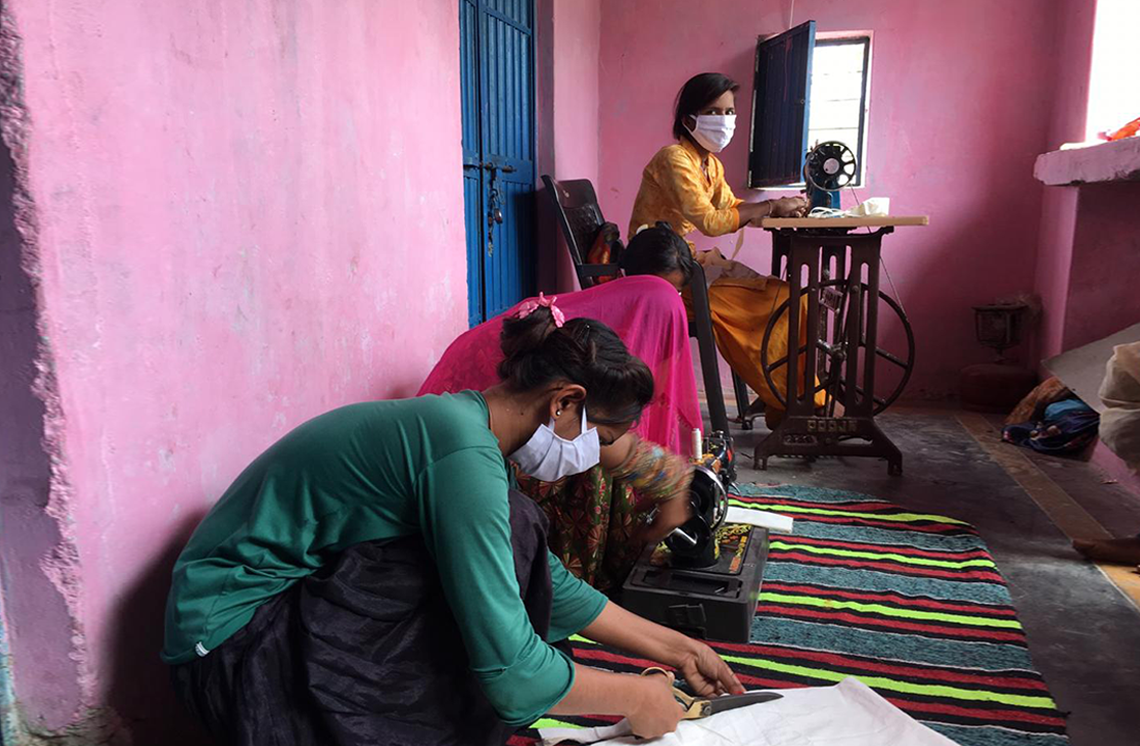
MY IDEA BEHIND ART & CRAFT
an energy to preserve

I’ve always had the curiosity to see what is hidden in the small worlds of my Dad’s projects.
Any object that could potentially contain a “world” made me so fascinated and curious to discover more.
By taking apart and reassembling his creations, I learned from him how to design.
Here is how I became an attentive observer of artisan design. Essentially my father was a stylist.
For him, “tailoring” meant sitting on the sofa in his laboratory and taking the time necessary to create an object that would follow him and talk about him over time.
My first lesson was therefore that the adjectives “sartorial” and “artisan” mean, above all else, culture of itself. They mean loving each other and choosing to wear a dress that will take months to create. My father taught me that “beauty” does not necessarily have to be for special occasions but must make every occasion special. And what’s more special than feeling beautiful, wearing a story made of passion?
Here is what is the “beauty of tailoring”.
The craftsmanship of weaving is for me a sector suspended between productivity and art, for three substantial aspects: First of all, the work of the craftsman is not personalize to him, the object produced being the result of his creativity, professional ability, experience and artistic talent.
Secondly, craftsmen have the possibility to determine, as owner of their own means of production, rhythms and working times, based on schedules that take into account their vital rhythms and their economic needs, freeing themself from the maddening search for profit accumulation typical of industrial production.
Finally, the last but perhaps most important element: this mode of production allows those who practice it to express their talent and their artistic skills, or rather, their unique history.

We know, Technological evolution is rapidly changing the world of work, leading both to the birth of new jobs and the disappearance of some professions, which have perhaps become superfluous due to the change in people’s living conditions or thanks to the inventions of new tools , which have replaced human labor. Just take a look at the past to discover many professions, which until a few decades ago employed part of the workforce, which now, however, seem to belong to a distant world now. Some have disappeared and appear even a little bizarre. On the other hand, we are witnessing a cultural impoverishment: the logic of throwaway has replaced that of handmade products. Only those who look beyond are able to resist their attractiveness, thanks to export-import for this.


In many cases of traditional craftspeople, there are no heirs, no succeeding generations to take up the tools : the wisdom accumulated over centuries of work done, risks taken. All is being lost with the last craftsman who closes the shop and retires.
Fewer and fewer young people are willing to “get their hands dirty” to continue the knowledge transmitted to them by their fathers. The advent of technology with its apparent “simplicity” has challenged the culture of sacrifice in the new generations. Mass information has brought great disorientation in their identity and in this state of “apathy”, the conviction that needs to get out of their “family nest” rather than develop and grow in harmony with the modern market prevails. I think they should pay more attention to the conservation of memory, knowledge and experience. How can craftsmanship be enhanced without knowing its techniques and secrets? You must humbly put yourself in the condition of knowing a tradition and then being able to reinterpret it and bring it closer to contemporary aesthetics
However, the artisans who continue to work in the textile sector maintain their creativity, the possibility of determining their own rhythms and production times, despite considerable difficulties due to the need to produce at a higher rate in order not to lose market share.
As capitalist production moves towards its mature phase, the artisan way of producing takes on a new dimension of pre-eminence in the economy: it is the only sector to guarantee flexibility in the production of materials to remain on a market always more saturated with mass-produced goods, and that rewards those productions that are qualitatively better and artistically and aesthetically more attractive to the customer.
In this sense, the craftsmanship has a chance to produce diversified and captivating materials which prevents large companies, unable to reprogram and reconvert quickly and with low costs in the face of market demands. Thus, textile craftsmanship has undergone a remarkable development, to the point that the same large groups in the industrial textile sector take the creativity of textile craftsmen as a point of reference.


Personally I believe that, in this strong moment of crisis not only economic, but above all emotional, an object that is born from body training, such as the craftsman’s object, represents new lifeblood of the plant of human genius: the “knowledge and skill of the hand” it is the root but it aspires to touch the sky.




Adopting a comparative vision on distant territories, we realize how much the artisan professions bring vital and almost sacred values to the populations of that place. Values and symbols resulting from millennial customs, hopes and sometimes even wars and rebirths.
To give a simple example of how culture influences the way of “creating” art in a different way, let’s consider the “dance of colors”: this is not the same in China as it is in the West. For western peoples, blue is linked to the idea of melancholy (it is no coincidence that they say “feeling blue” to mean that they are low in spirits). In China, however, this color embodies the meaning of spring and auspiciousness, trust and longevity. It is also linked to the idea of quality and is conceived as a female color. In the West, blue is linked to the male universe.
So here the craftsman finds himself, in different territories, facing the dilemma of creation:
the shape he will model or the dress he will weave must also be calibrated on the color of culture, of his memories, of his fears and hopes.
By choosing the blue color, its manual ability will bring to completion not only the expression of an aesthetic taste, but above all the imperceptible music of the millennial songs of its predecessors. With that color, he will support one idea instead of another and even his interlocutor of beauty could change. His blue work will therefore represent what I love to define: the imprint of culture in the act of creating. The arts and crafts of the world therefore have the strength to make artistic objects “alive” and first descendants of their creative fathers.

